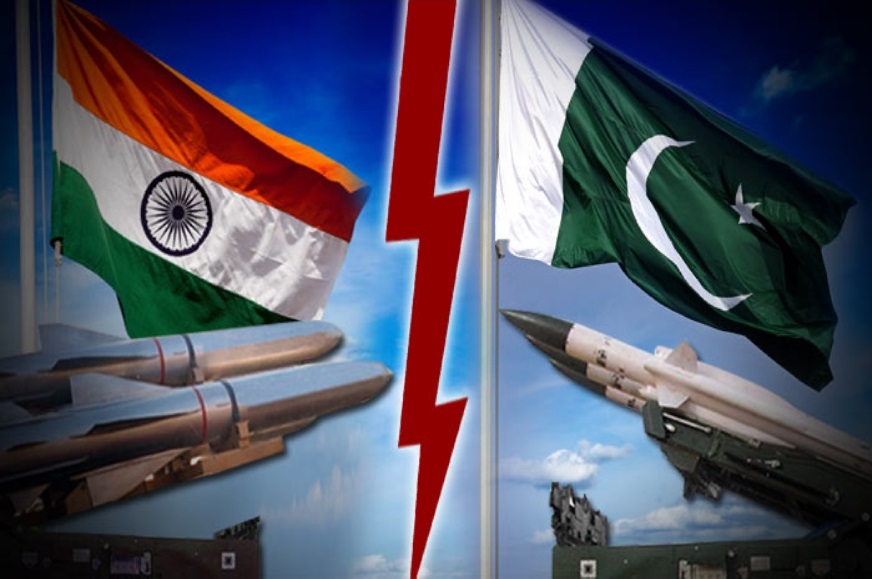Indian leaders of unbridled ambition and meagre wisdom have recently suggested that India might revoke its earlier policy of No First Use (NFU) of nuclear weapons. They should be forgiven. To stay in the public eye, South Asia’s street-smart politicians need to make a lot of noise all the time. Most did not do very well in school and even fewer made it to college or university (and some ended up playing sports there).
Nuclear strategists, on the other hand, are advertised to be academic hotshots. The high-flying ones belong to various think tanks and universities — including prestigious ones in the United States. These so-called experts fill academic journals with thickly referenced research papers, participate in weighty-sounding conferences, and endlessly split hairs on minutiae like the difference between nuclear deterrence versus nuclear dissuasion.
Slyly hinting that NFU has run its course and needs a replacement, several Indian strategists have been openly flirting with a so-called counterforce doctrine — ie the possibility of knocking out Pakistan’s nuclear forces before they are activated. Paid to serve power rather than truth, like the proverbial serpent they whisper ideas into eager official ears. Their academic discourse and heavy language gives the impression that they really know what they are talking about. They don’t. In fact, they are clueless.
Here’s why. Every nuclear nation confines its deepest secrets to an extremely tight inner circle. Outsiders — meaning civilians — are excluded from what is critical. They cannot know such crucial details as the chain of nuclear command, geographical dispersal of warheads and delivery vehicles, intelligence on how well the adversary has concealed its nukes, whether warheads are mated or de-mated from delivery vehicles, integrity of communication channels, the efficacy of decoys and countermeasures, and much other vital information that would determine whether a first strike would achieve its objective.
Nuclear strategists are actually not nuclear experts and have no ability to predict any significant nuclear event.
So how do self-important know-nothing strategists — Indian, Pakistani, and American — ensure their salaries will continue reaching their bank accounts? Well, they write papers and therefore have to perfect the art of saying nothing — or perhaps next to nothing — in 5,000 words. Fact: no nuclear strategist knows the threshold of a nuclear war, can predict the sequence of events following a first strike, or persuasively argue whether nuclear hostilities could somehow be wound down. Of course he can guess — just as every Tom, Dick, and Harry can. But guesses are only guesses.
Could it perhaps be better inside a military organisation? War gaming is certainly a compulsory part of an officer’s training and one can feed parameters into a computer set up for simulating the onset and subsequent trajectory of a nuclear conflict. If properly programmed and proper probabilities are inputted, it will output the probabilities of various possible outcomes. But, as in tossing coins, probabilities make sense only when something can be repeated a large number of times. The problem is that nuclear war can happen only once.
That’s bad enough but, in fact, it’s even worse than that. You can give probabilities for missiles to be intercepted or for getting through, and for mechanical and electrical systems to work or fail. But you cannot assign probabilities for humans to act in a particular way during a crisis because that depends on mood, perception, personality and circumstance. Nuclear strategy pretends to be a science but is by no means one. Where has the other party drawn its nuclear red line (the real, not stated, one)? No one knows.
Consider: would one nuke fired at invading Indian tanks from a Pakistani Nasr missile battery elicit zero, one, three, or 30 Indian nukes as retaliation? The Indians say that a single nuke used against them, whether on Pakistani or Indian soil, constitutes a full-blown nuclear attack upon India. Should one believe them? Would panic ensue and cause one or both sides to descend into a totalistic use-them-or-lose-them mode? No one knows.
The nuclearised confrontation between India and Pakistan over Kashmir is best seen as a territorial fight between two street cats. I have had occasion to watch several. You can hear the growls grow louder. These then combine with hissing after which howls and growls get mixed. Sometimes they fight and sometimes not. Since they have only claws and teeth, never do both cats end up dead. But with nuclear weapons two opponents would strictly eliminate each other. In addition, their war would seriously devastate neighbouring countries and poison much of the globe.
The catfight analogy helps illuminate, for example, Defence Minister Rajnath Singh’s statement that continuation of India’s NFU policy depends upon ‘circumstances’. Since he left ‘circumstances’ unspecified, this could cover everything under the sun. Although dozens of articles were published commenting on his statement, in fact it carried exactly zero content. NFU is purely declaratory, impossible to verify and impossible to enforce. Nevertheless the statement was significant — the growling had become a tad louder. Plus, did you hear a slight hiss?
India’s hint at moving away from NFU towards counterforce owes to its increased military advantage over Pakistan. But hubris often paves the way to overconfidence and disaster. As every military commander worth his salt knows, all plans look fine until the battle begins. Last week a ragtag Houthi militia took out 50 per cent of Saudi Arabia’s oil-producing capacity, underscoring how even a relatively ill-equipped force can wreck an adversary bristling with the most advanced weapons that limitless oil dollars could buy. Sellers of snake oil and con men do not deserve anyone’s ears or respect. Whoever advocates a nuclear first strike should be quickly locked up in a mental asylum.
Some years after the Kargil episode, Gen Pervez Musharraf realised that nuclear weapons had brought Pakistan and India to an impasse. He is so far the only leader courageous enough to explicitly acknowledge this and — most importantly — to say out aloud that, for better or for worse, mutual fear of nuclear annihilation has etched the LoC in stone. It remains to be seen if other Pakistani and Indian leaders can dare to follow his example. Only then might peace get half a chance.








Nice article. War, especially nuclear war is a monster, God forbids